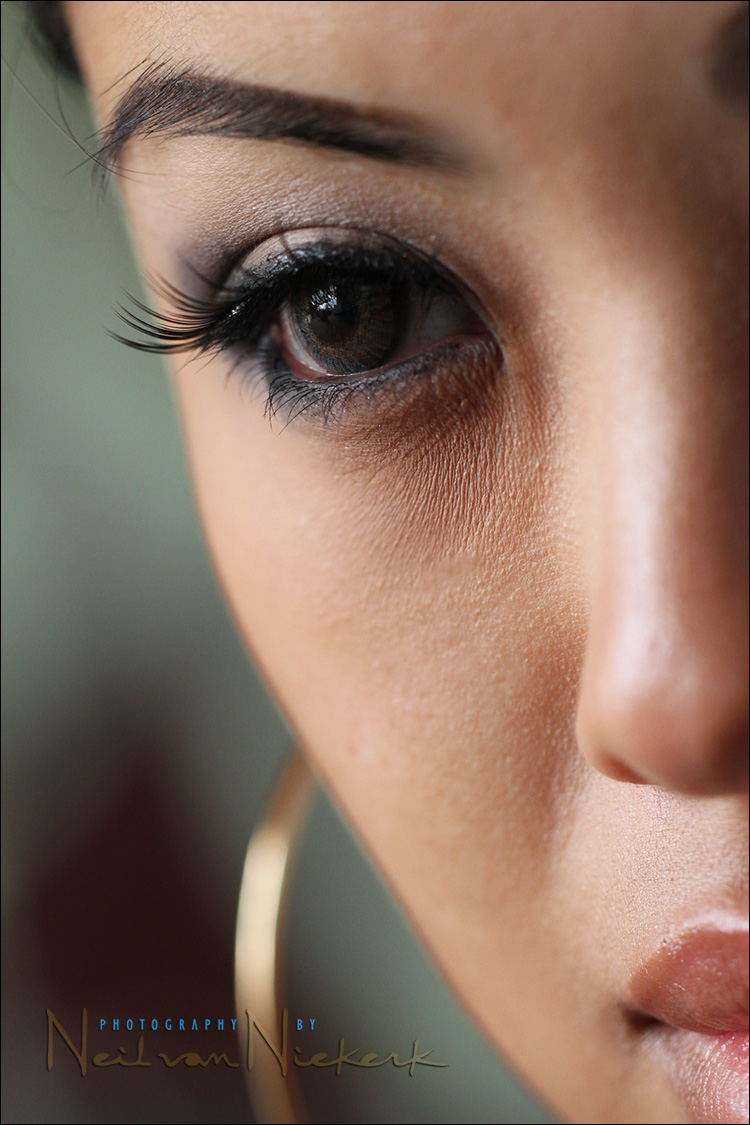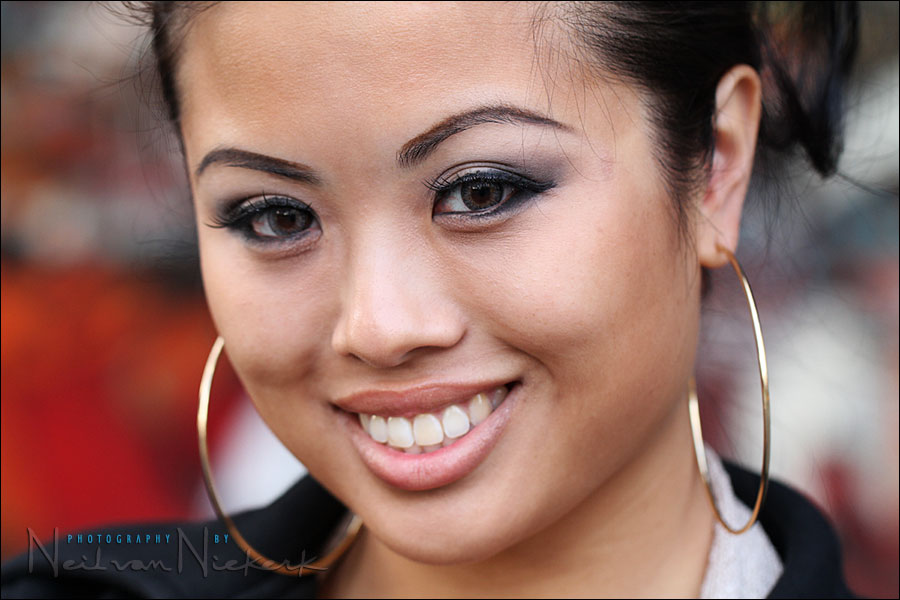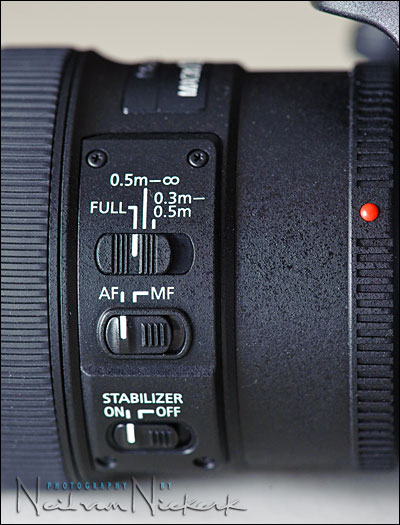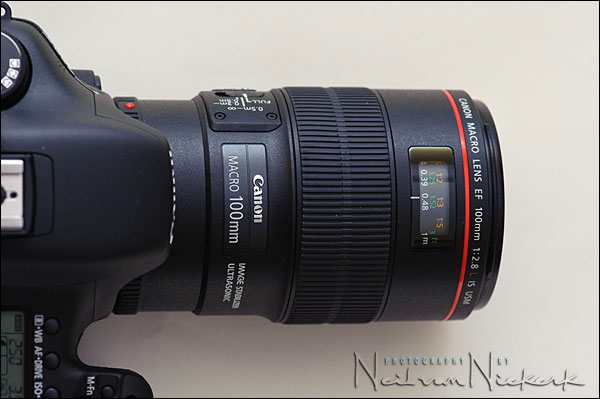
review: Canon EF 100mm f/2.8L Macro IS lens
The specialty of a macro lens is in allowing you much much closer to your subject than a normal optic would .. with the ease of continuous focusing from infinity to the closest distance. No need to screw in additional rings or lenses or reverse your lens. A macro lens works as a close-up lens, and as a more usual optic. And that’s the versatility of it.
The main feature of the Canon 100 mm f/2.8 IS macro lens (B&H / Amazon) is that it offers stabilization. Now this might not seem such a big deal to photographers who work with a tripod and photograph more static subjects – but the moment you want to shoot on the move, and play around fluently with your composition and angles – then using the lens hand-held becomes a huge advantage.
Instead of photographing the usual macro subjects – flowers and insects – I decided to test the Canon 100 mm f/2.8 IS macro lens (affiliate ), during a portrait session with a model, Annisa.
In the photo above, my settings were 1/200th @ f3.2 @ 400 ISO. In testing the lens with and without the IS enabled, there is a clear difference in the crispness of the (handheld) images. There’s no doubt that the IS works, and is a major improvement on the previous generation of this lens ..
Of course, I had to machine-gun the series of images to get a few images which were critically sharp. This is because the depth-of-field was minimal at f3.2 at such a relatively close focusing distance. If I merely breathed, or the model moved ever so slightly, the photograph would be out of focus. That I had to do this was no fault of this exemplary lens, but rather a by-product of the way that I chose to shoot – handheld. The stabilization will definitely help with camera shake, but won’t affect how sharp my subject appears due to subject movement .. or my own movement towards or away from my subject, however small a distance it might appear to be.
One more photograph of our model, but this time at 1/100th @ f4 @ 400 ISO

… and it is super-sharp on her one eye, while in an enlarged view, her mouth goes gently out of focus at such a short focusing distance. Once again, the lens’ stabilization is without a doubt a huge boost here in the results you can achieve.
I used the Canon 7D camera (affiliate) for this photo session, so the 1.6x crop factor helped compress the perspective for portraits.
Specifications
Minimum focusing distance: 12″ / 0.31 meters
Filter size: 67mm (the older lens has a filter size of 58mm)
Weight: 1.38 lbs / 625g (ever so slightly heavier than the previous lens)
Length: 4.8″ / 123mm (a fraction longer than the previous lens)
Optical performance
The optical performance of this lens is very impressive! This lens is sharp. Even at f2.8
The edge-to-edge sharpness is superb, as you’d expect from a macro lens.
Auto-focus performance
Theis updated lens focuses noticeably faster than its predecessor. Macro lenses have a tendency to be slow to focus because of the extreme range that it can focus – hence the focus / distance limiters – but this lens has a very firm response when you initiate auto-focus. Fast and assured.
Controls
The lens offers the usual controls via the buttons on the left-hand side of the lens barrel:
– focusing ranges,
– auto focus / manual focus
– stabilization on / off

Summary
If you need a stellar macro lens for your Canon camera, and would also like it to double up as an effective portrait lens, then this is it! Optical performance is truly great, and the lens handles well and offers stabilization. This is as good as it gets.
If you are interested, you can buy the Canon 100 mm f/2.8 IS macro lens via these affiliate links: (B&H / Amazon)
Reviews of other Canon gear
Other Canon photo gear that I’ve reviewed.

Neil – What is the border on edge of her face? Otherwise the sharpness of the image is impressive.
How would you say this compares to the 105 Nikon 2.8 VR Neil?
Rod
Looking forward to the 7D review! The new 100mm looks stellar!
Neil, you said “If I merely breathed, or the model moved ever so slightly, the photograph would be out of focus.” I found (shooting insects, not beautiful models!) that using servo focus mode (how is it called for Nikon?) really helps: the continuous focusing usually keeps up with the small movements.
Marco
Hey Neil, thanks for posting the review.
When you are dealing with extremely narrow depth-of-field and you rapid-fire to raise the odds of a sharp image, do you typically auto or manually focus?
Cheers,
Chris.
traded my 135mm f/2 in for this lens. in all of my lens swaps over the years, i got this one right. great lens.
I experiment much with macro, although I use the non IS version of this lens. Maybe I will upgrade later.
What I normally need to do for getting super sharp focus to use live view and magnify about 5x. When I use auto focus or look in the viewfinder the pictures are rarely sharp.
Also I found that if I use auto focus and center focus on my 500d very often the camera will loose focus and hunt for a bit which is very annoying.
Anyone else had success with this technique?
I try as much as possible to use a tripod for my shots but this is of course very challenging since the angles are strange and the subjects are often moving.
Neil,
I don’t know if you have ever used the 135L by Canon, but what would you choose for a portrait lens.
f/2 vs 2.8+IS ?
Thanks, once again you are costing me money!
I, too, bought the 100mm 2.8 L IS recently.
So far so good (it is almost as good as it gets. My understanding is – see https://www.the-digital-picture.com/Reviews/ISO-12233-Sample-Crops.aspx?CameraComp=0&FLIComp=0&APIComp=0&Lens=674&Camera=453&Sample=0&FLI=0&API=0&LensComp=103 – that only its non-IS sibling (under €500,-); the 135mm F2.0 L (slightly more expensive); the 200mm F2.0 L IS (costs around €5.000,-); 300 F2.8 L IS (ca. €4.000,-) and EF 400 F2.8 L IS (ca. €8.000,-) are as sharp or (in the case of the much more expensive telelenses referred), very slightly sharper and Chromatic Aberration-free.
Speaking of the 70-200mm F2.8 IS, I’d been very dissatisfied with its optics (except for bokeh. Especially when used fully open) – and sold it before buying the 100mm Macro. I used to have a 70-200 F4 for a while – it was noticeably sharper and had better contrast than its faster, image-stabilised counterpart. But on the 40D the viewfinder was dark as hell – very difficult to focus with LiveView off; the lens wasn’t fast enough (particularly for frequent use under our climatic conditions), I lamented its lack of IS and I found its exterior design with a long and relatively thin barrel, somewhat unappealing.
I won’t buy the 70-200mm F2.8 (IS), or recommend it to anyone. I completely disagree with those who claim that a portrait lens needs not be sharp. I would be glad to elaborate on the subject, but I won’t digress too far…
Hi Neil, would you recommend this lens over a canon 100 f2 or 85 1.8 for dimly lit wedding ceremony action. Using on a full frame camera and I’m thinking low light capabilites, bokeh etc. In your experience, is f2 or f1.8 too shallow for those situations?
Thanks for a great site!
Great super sharp lens. Quick moview with iS in action on and Off heandheld, she is so hot
https://www.youtube.com/watch?v=CARvH4ntIQE
Hi Neil, I was just wondering… did you get round to putting your thoughts on the Canon 7D into words? I’m thinking of upgrading (from a 450D) and would be interested to hear your opinions.
Thanks for that review, Neil. I’ve been seriously thinking of the 100mm macro to expand my possibilities, and was glad to run across some portraits you’d done with the lens. I’m just wondering if using a cropped sensor could have affected the need for stability, since it would be a bit more magnified than a full frame.
Hi,
Great review. Thank you so much,
I wonder if a 85 1.8 and this makro would both make sense?
I own a 35 1.4 for the wider shots and a 135/2 for tele. So would a 100 2.8 in the middle be enough?
The macro has a very specific use – 1:1 close-ups. It also doubles up neatly as a portrait lens. In a way this would make the 85mm f/1.8 slightly redundant for portraits alone.
From what I have been reading the autofocus is faster and more accurate w/ the 100mm non IS macro than the 100mm IS L version. What is your experience?
Don, I didn’t compare the IS vs non-IS versions.
For me though, the speed of autofocus is less of a critical issue with macro work – and the stabilization is a major boon. So that would override any concerns I would have had about the speed of AF.